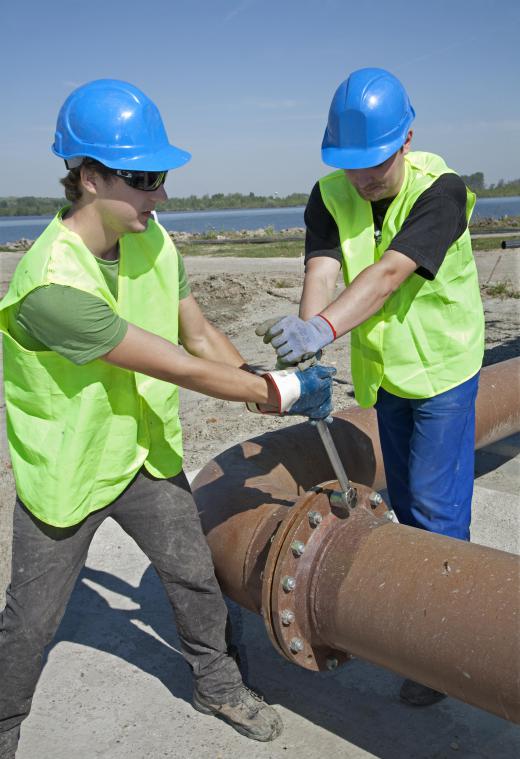A pipe wrench is an aluminum or steel tool used for gripping and then tightening or loosening rounded metal objects, such as bolts, pipes or rods. A pipe wrench is made of an upper hook jaw and lower heel jaw piece connected to a flat handle. The jaw pieces have small teeth or grooves for gripping rounded objects when turned, and the lower jaw can be adjusted either up or down to fit the size of the metal object. Pipe wrenches come in a variety of sizes and types.
This type of wrench should not be used on hard metals, such as steel, or on square objects, as the teeth of the wrench can cause damage to the surface. Also, there should be a 0.5-inch (12-mm) space between the back of the hook jaw and the surface for the proper amount of gripping to be applied and to prevent damage to either the object, the wrench or the person. If damaged, a pipe wrench, also called a Stillson wrench, can be repaired by purchasing a teeth and jaw kit.

There are three main types of pipe wrenches: the straight, the offset and the end pipe wrench. Other types of wrenches include the compound leverage wrench, the chain pipe wrench and the strap wrench. Each of these tools has its own unique purpose and specification.
The straight wrench is the original pipe wrench designed by Daniel C. Stillson in 1869. A straight wrench is the most popular general purpose wrench and is an essential part of any tool set. Wrenches are measured by the length of the handle, and a straight wrench can be purchased in sizes ranging from 9 to 60 inches (about 23 to 152 cm).
An offset wrench is designed to be used in tight spaces where there is little to no room to swing the handle of the wrench. They also are useful for turning objects that are at an awkward angle or when a pipe is parallel to another object. An offset wrench’s hook jaw is placed parallel to the handle of the wrench and has a narrower jaw head.
The end pipe wrench is used on the parts of a pipe that are close to the wall or where the pipe changes direction. The hook jaw and heel of the wrench are at a slight angle to the handle of the wrench, which makes this tool very useful in tight spaces. The end wrench can also be useful when working on overhead pipes.
